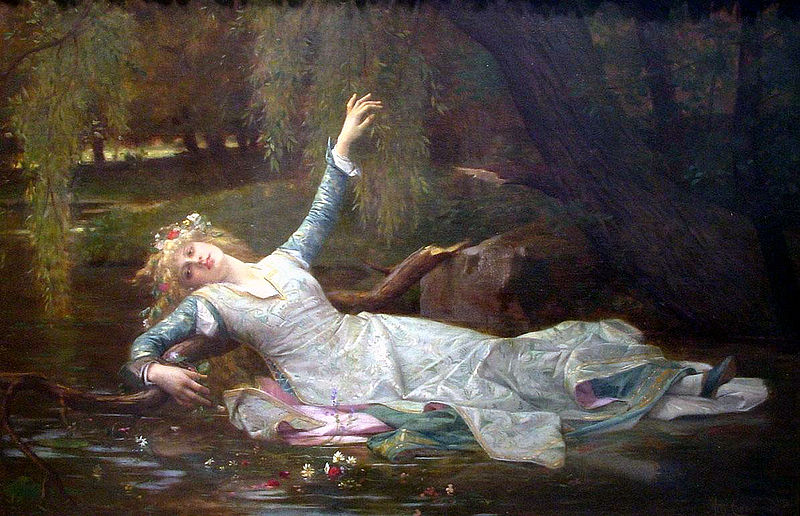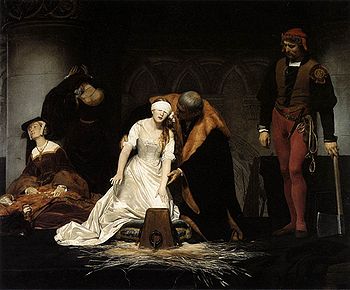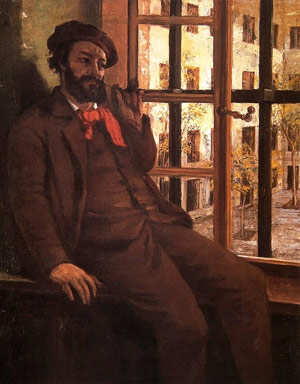It was infinite ecstasy with ”la belle dame sans merci”. By the time of Berlioz’s ”Symphonie Fantastique” , he had won the Conservatoire’s Prix de Rome, a five year fellowship that entailed two years of residence at the French Academy in Rome. He had dropped his stage door passion for Harriet Smithson in favor of a more promising courtship with a young pianist, Camille Moke, and when he left for Italy early in 1831, he considered himself engaged to be married. When the news came that she had jilted him for the piano manufacturer Pleyel, Berlioz came as close to committing suicide as the hero of his symphony.
But though Berlioz felt ”fierce as a chained dog” at the Villa Medici, the Italian spring quickly dispelled his misery. Armed only with his trusty guitar, he went hiking through the Campagna and the mountains of the Abruzzi, developing a taste for the roughest kind of folk music. What he liked best was ” a leather-lunged peasant roaring out a love song under the window of his girl , to the accompaniment of a huge mandolin, a bagpipe and a little iron instrument like a triangle…” He was storing up enough scenic and sonic impressions to last a lifetime. Not only his next symphony, ”Harold in Italy” , but all his dramatic works , with the exception of ”Faust” , were henceforth to have a Mediterranean setting.
Back in paris in 1832, he learned that Miss Smithson was now starring with her own company and piling up ruinous deficits at the box office. Returning to his original ”idee fixe” , he sent her a ticket to his next orchestral concert. When the actress entered the box that evening, she may have been the only person in the audience who was unaware that she herself figured as the heroine of the program; all she knew was that the composer had once been in love with her.
The ”Fantastique” began the program. As Berlioz writes, ”the passionate character of the work, its burning melodies, its cries of love, its accesses of fury, and the violent vibrations of such an orchestra heard close by, were bound to produce an impression.” This is the comment of an aural erotic, a man in love with sound both for its own sake and for the effect it has on others. Harriet heard his violent vibrations and asked herself, ”What if he loves me still?”
Next on the program came ”Lelio ou la Retour a la Vie” , a sequel to the ”Fantastique” that Berlioz had patched together from various miscellaneous choral and orchestral sketches. On stage they were linked together by an actor declaimimg spoken monologues. When Harriet heard him apostrophize ”Shakespeare, Shakespeare!” and call upon ”this Juliet, this Ophelia whom my heart is ever seeking,” she could no longer doubt what was happening.
The room began going around in circles; she went home in a trance. The next day, Berlioz was formally introduced to her at last; it was December 10, 1832, and more than five years had elapsed since the night he had first seen her as Ophelia. They were married at the British embassy the following October, with Liszt as witness, but against the wishes of both families. He was not yet thirty; Harriet was thirty-three.
To pay her theatre debts and to provide for his growing family, a son, Louis, was born in 1834; Berlioz commenced his Augean labors as a critic. Even so, in the first years of his marriage he produced some of his finest works. ”Harold in Italy” reviews his Italian experiences, ostensibly the subject is Byron’s ”Childe Harolde”, one of the ” wanderers o’er Eternity’, and focuses on a kind of interior monologue. Nowhere in the whole orchestral repertoire is there a more subtle or breathtaking piece of music than the slow movement, where the melancholy solo viola is interwoven with the evening hymn of a passing pilgrim band.
His next major score, ”The Requiem” , demonstrates the power of massed voices and brasses as only Berlioz knew how to deploy them. His vision of the Last Judgement is spatially conceived: the main orchestra and chorus are surrounded by four satellite brass bands that answer one another over the heads of the audience in furious vectors of sound. This is an arrangement requiring split-second co-ordination and Berlioz was never happier than on those rare occasions when he could conduct his preview of the Apocalypse.
”The chorus sustained the assault of the orchestra without flinching; the fourfold peal of trumpets broke forth from the four corners of the stage, already vibrating with the rolling of the ten kettledrums and the tremolo of fifty bows; and in the midst of this cataclysm of sinister harmonies and noise from the other world the hundred and twenty voices hurled forth their terrible prediction…”
The ”Requiem” impressed the critics, but it could not make the walls of the Paris Opera come tumbling down, and only by mounting a successful assault in that quarter could Berlioz hope to become self-supporting as a composer.
”The Romantic style describes a personal journey, mainly between degrees of light and dark, and frequently between life and death. The territory covered is internal, and the method is through memory – the hero can only return to life by recalling moments, experiences, joys and sorrows, and by that means reconstitute himself again. This is true in Berlioz, who could not exist without Beethoven, and in the art of Courbet, who himself only cares about telling you what he thinks, whether in the famous self-portrait above or this wonderful one of himself as a Communard, rueful and self-mocking:”
” If we are ready to believe anything good of Berlioz, that his music contains a magic that is absent from Bach, a strength and purity that were denied to Wagner, and a subtlety to which Mozart could in no sense attain. Critics who are less fervent in their admiration, are not, however, readily convinced , and the old discussion has taken a new lease of life. There is however little to be gained by pursuing the controversy on technical lines. To deny that Berlioz was a melodist on the ground that his phrases cover a wider ground than those of other composers, or to denounce his harmonic progressions by text-book standards is not necessarily conclusive,….On the other hand it is pointless to uphold Berlioz as, for instance, a great melodist when the ”anti’s” merely reply with the contention that his melodic lines, even admitting their legitimacy, have no musical vitality. The whole discussion must end in deadlock, judgement upon the aesthetic value of Berlioz’s music being still divided. ” ( J.H. Eliot, 1929 )
The debate always goes back to whether Berlioz was actually a musician , and whether pure music had any meaning for him. The art of Berlioz was not entirely a musical one. Musical logic as an abstract condition may have been entirely outside his system of values; were musical phrases of Berlioz shaped from any consideration of pure design? in the nay, it implies more than mere musical notes. Meaning that Berlioz did not intend to create music, but rather tonal embodiments of some definite conception that defy analysis and appraisal in any strictly musical terms.










 COMMENTS
COMMENTS